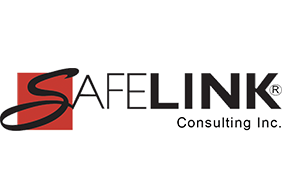Many businesses don’t know they are required to have a Lockout Tagout Program, so it’s not surprising that the lack of this program is one of the most frequently cited OSHA violations.
Many general industry businesses don’t think about this requirement because their business may not necessarily be in a high hazard industry. They may not think about the relationship between what goes on when it comes to maintenance and repair of equipment and other items. When OSHA looks at a program they want to make sure that it contains all elements that are required by the OSHA Standard and has been developed specifically for your business.
May is National Electrical Safety Month according to ESFI - Electrical Safety Foundation International. But you don't have to wait until May. Now is a great time to review your workplace Electrical Safety Plan and Lockout / Tagout Program.
Electrical Safety Policy
All electrical work for a business should be conducted in a manner consistent with existing regulations and with good standard practices. A business’ Electrical Safety Policy establishes standards for most operations. More involved and hazardous operations should have separate Standard Operating Procedures written for their specific situation which could include work that is performed by contractors.
The employer’s responsibilities in the Electrical Safety Policy should include:
º Assessing all work hazards and monitoring that all safeguards are being utilized.
º Ensuring that all employees are properly trained and instructed in the safe operation of electrical equipment and are aware of all hazards associated with the use of these electrical devices.
º Making sure assistance is given for equipment and devices that require unique safety practice instructions.
º Providing any necessary administrative action required to enforce safety practices.
º Defining hazardous operations, designating safe practices and selecting proper application of devices.
º Establishing standard operating procedures for electrical equipment and devices in use.
º Evaluating potential electrical hazards during facility inspections to insure compliance with existing policies and other safety guidelines.
º Supporting hardware and equipment testing, tagging out of unserviceable equipment, and taking corrective action where necessary.
The employee’s responsibilities in the Electrical Safety Policy should include:
º Following the employer’s electrical safety policies and procedures and instructions of responsible supervisor and/or Safety Coordinator.
º Bringing to the attention of the supervisor and/or Safety Coordinator potential hazardous situations such as discrepancies between instruction, procedures, policies and manual, faulty equipment, misapplication of device, etc.
º Reporting electrical equipment known to be malfunctioning and refraining from using this equipment until it is repaired or replaced.
º Safe workplace practices that must be followed by all employees should be detailed in the Electrical Safety Policy, as well as, emergency procedures, emergency removal of tag and lock, reporting requirements for damaged or defective electrical equipment or equipment not operating properly or equipment in wet environments.
Lockout / Tagout (LO/TO) Program
The purpose of LO/TO is to de-energize the equipment, therefore, the employer must assess hazardous energy sources and develop procedures to control the hazardous energy. The employer must recognize that during servicing and/or maintenance of equipment, employees have the potential to be involved in a serious or fatal accident caused by the unexpected start-up of equipment or the release of stored energy.
A Lockout / Tagout program should be developed to establish procedures for the control of hazardous energy. This policy should be intended to comply with the requirements of OSHA standard 29 CFR 1910.147, Control of Hazardous Energy (lockout/tagout), and the provisions of OSHA's Electrical Safety-Related Work Practices Standards: 29 CFR 1910.331; 1910.332; 1910.333; 1910.334; and 1910.335.
The written Lockout/Tagout policy should include:
º Purpose – identifies the need for the program and important definitions.
º Applicability – distinguishes when an operation is regulated by the lockout/tagout policy.
º Training – recognizes the need for educating each employee or contractor involved in or affected by lockout before being allowed to work in the area with equipment or systems that are subject to lockout/tagout.
º Lockout/Tagout procedures – details the formal methods, procedures, and equipment to be used to ensure that before any employee or contractor performs any servicing or maintenance on a machine or equipment where unexpected energizing, start up or release of stored energy could occur and cause injury, the machine or equipment shall be isolated, and rendered inoperative.
º Steps for Restoration of equipment and removal of Locks and Tags – delineates important procedures that must be followed whenever any locked or tagged out equipment will be brought back into service or whenever locks or tags are to be removed.
º Annual Review – ensures that procedures are adequate and are being followed.
º Outside Contractor – evidences their lockout/tagout program training.
º Lockout/Tagout Equipment List - pinpoints equipment requiring implementation of lockout/tagout devices prior to maintenance or repair work being performed and procedures for each piece of equipment.
º Annual Lockout/Tagout Program Audit Report - indicates authorized and affected employees who have been trained on the lockout/tagout procedures.
º Lockout Tagout Record– includes signature, date and time of affected employees regarding notification, shutdown, disconnection of power sources, lockout, safety check.
º Restoring Equipment to Service Record – includes signature, date, and time of authorized employees regarding job completion/certification, equipment/personnel check, and startup.
No matter the level of industry hazard, all general industry businesses must implement elements of Lockout Tagout if they apply to their business according to the OSHA Standards. A covered employer should develop a Lockout/Tagout Program to protect workers from hazardous energy when repairing or performing preventive maintenance on equipment.
Learn more at ESFI - Electrical Safety Foundation International.
Take online course: Elements of an Effective Lockout Tagout Program for the Dental Community
This course will assist a dental practice or dental laboratory better understand their requirements for a Lockout / Tagout Program. A dental practice under NAICS code 621210 is considered a low hazard industry. A dental laboratory under NAICS code 339116 is considered a high hazard industry as of 2015. No matter the level of hazard, the dental community must implement elements of Lockout Tagout if they apply to their business according to the OSHA Standards. A covered employer would develop a Lockout/Tagout Program to protect workers from hazardous energy when repairing or performing preventive maintenance on equipment. The purpose of LO/TO is to de-energize the equipment, therefore, the employer must assess hazardous energy sources and develop procedures to control the hazardous energy. Potential exposures to hazardous energy can be fatal. This course will review the elements of the Lockout/Tagout Program including the written program, procedures, and training.
Take online course: Understanding Electrical & Mechanical Hazards in the Dental Environment
In this course you’ll learn how to keep workers safe from hazardous energy in the workplace. According to OSHA’s 1910.147 requirement, if you have any employees who perform repairs or preventive maintenance on equipment in your business, then you must develop, document and utilize the control of potentially hazardous energy otherwise known as lockout/tagout. This course will walk you through OSHA’s requirements for determining which equipment requires lockout, setting up your Lockout/Tagout program and how to develop written procedures. This general industry course is ideal for anyone who is responsible for or oversees repairs and preventive maintenance of equipment and safety coordinators.
Take online course: Measuring the Effectiveness of You Energy Control Procedures
According to OSHA’s 1910.147 requirement, if you have any employees who perform repairs or preventive maintenance on equipment in your business, then you must develop, document and utilize the control of potentially hazardous energy otherwise known as lockout/tagout. This course will walk you through OSHA’s requirements for determining which equipment requires lockout, setting up your Lockout/Tagout program and how to develop written procedures. This general industry course is ideal for anyone who is responsible for or oversee
Need a Health and Safety Manual for your business? Contact us for customized programs.
Learn more about what SafeLink Consulting can do to help your business with compliance services, including safety compliance, to meet OSHA training requirements and quality system consulting to meet FDA compliance. SafeLink Consulting assists businesses with workplace safety training, infection control training, HIPAA training online, quality systems, assessments, audits, due diligence, and more.
Industries include:
Dentistry compliance - assisting the dental practice with meeting requirements for OSHA, HIPAA, EPA, and CDC guidelines, patient safety and employee health & safety
Dental Laboratory compliance - assisting the dental lab with meeting requirements for OSHA, FDA, and CDC guidelines, employee health & safety, plus FDA requirements for lab manufacturing custom implant abutment /gmp for medical device manufacturers
Medical Device Manufacturers compliance - assisting with meeting OSHA compliance & FDA requirements, GMP - good manufacturing practices
General Industry compliance - assisting with OSHA compliance and FDA compliance as it pertains to the specific business
Beverage Industry compliance - assisting beverage businesses such as the craft brewery, winery, cidery, distillery, vintner with meeting OSHA compliance, health & safety, FDA requirements / GMP - Good Manufacturing Practices.
Get notification when new regulatory compliance training courses are added plus upcoming events by subscribing to our email news.








Leave Comment